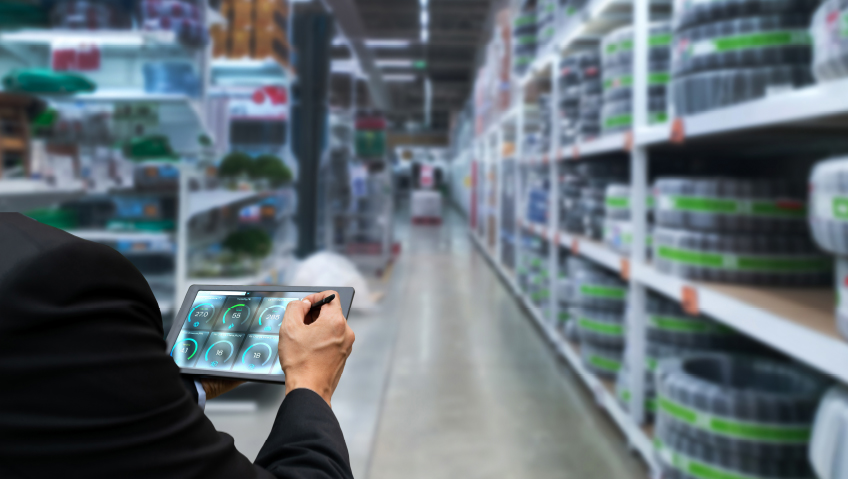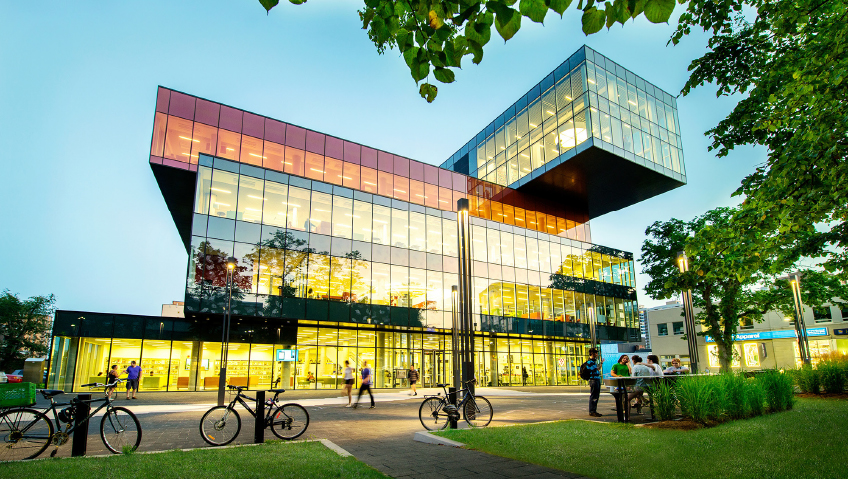A modern warehouse is one that can keep up with the changing demands of customers and the evolving trends taking place in today’s world—one that has the budget, ability, and willingness to implement the necessary technology and training required to operate successfully.
There are many ways that the warehouses of today are changing and a number of best practices in place to ensure that a warehouse operates effectively. Efficiency, of course, is essential in meeting customer expectations of accurate and timely delivery, and in a modern warehouse, paper picking lists and spreadsheets with stock locations are no longer enough. In their place, Warehouse Management Systems (WMS) have become increasingly popular and extremely beneficial.
Accuracy is another key factor in keeping warehouse operations running smoothly. “Playing a crucial role in the supply chain, warehouses are responsible for receiving, storing, and shipping the right goods to the right customers at the right time. As you can probably tell already, accuracy is playing a huge role in this,” according to Strategic Business Advisor Anthony Purcell for LinkedIn. However, due to fulfillment centers being forced to move goods more quickly and in more cost-efficient ways, accuracy has suffered.
There are ways to combat these challenges and allow for a warehouse to embrace all the exciting, new advances in technology a warehouse can benefit from. Warehouse Management Systems as well as robotics are just a few ways that accuracy levels in a warehouse can be improved and maintained. Inventory can be scanned and tracked using inventory robots and drones with the use of barcode scanners and RFID technology. And a successful warehouse will make use of more than just technology to improve accuracy levels, focusing on process and labour management and employee training, among other elements.
One lingering challenge facing the supply chain is COVID, and unfortunately, the virus remains part of our reality as it continues to evolve. COVID has had a huge impact on how people work, live, and socialize, and some of those shifts may be here to stay.
The lockdowns that were put in place throughout the pandemic caused online shopping to skyrocket as individuals were unable to leave their homes and were forced to shop online. “Forbes estimates that COVID accelerated the growth of e-commerce approximately four to six years,” according to a datex post. This growth in online shopping has changed the way warehouses operate by impacting how material flows and the storage of goods in the facility. Some of the changes to the operational process include workers needing to be retrained to pick individual items for order fulfillment. In addition, there are added costs associated with the processes and technology needed to accommodate pick and pack operations.
Another necessity stemming from the increase in online shopping is the customer’s expectation of accurate inventory visibility when placing orders. The increasing volume of online orders has made this more complicated. Faster and accurate order fulfillment can only be successful if it is known exactly where inventory is in each location. The implementation of appropriate technology is essential in this case, and inventory visibility in real time can be made possible by using technology that combines hardware and WMS systems.
Along with the growth of online shopping for items such as apparel, electronics, and home goods, there has also been an increase in meal kit subscription boxes, as many restaurants were shut down. “The trend towards meal kit subscription boxes increased during the pandemic, with companies such as HelloFresh growing 90 percent in the first quarter of 2020 alone,” describes datex. “Cooking became a popular pastime, and the hobby of making fresh meals, baking bread and ice cream took on new importance. Consumers ordered more fresh foods (when available), frozen foods and prepared foods. This altered warehouse operations, with many 3PL (Third-Party Logistics) cold storage warehouses, also known as public refrigerated warehouses or PRWs, taking charge of services needed to facilitate production and speedy delivery to consumers.”
The pandemic also impacted operations on the labour side, causing a number of work stoppages, shutdowns, and other disruptions. Reducing staff to comply with social distancing measures became an unfortunate reality as well as the occasional need to halt operations completely because of multiple workers being ill. In warehouses, where people are often required to work in close quarters, it was very challenging to follow the advice of the CDC and practice social distancing, and COVID spread rapidly as a result.
“One of the impacts of this is the acceleration of the trend toward the adoption of material handling solutions, automated storage and retrieval systems (AS/RS), voice technology and light technology solutions,” describes datex. Introducing robotics and technology systems that could replace human labour became necessary to keep operations running. This change in staffing inevitably led to inventory shortages and it became necessary to keep more inventory on hand to prevent them; however, this buffer stock largely impacted available warehouse space.
Certainly, the pandemic disrupted and changed many people’s lives both directly and indirectly. COVID has challenged individuals, businesses, and industries to put problem-solving skills into practice and to come up with solutions quickly and efficiently. Unfortunately, it took a global emergency for some of these needed changes to be put under the microscope, but now, as much devastation and loss as COVID has brought, there are some positive and permanent changes that are here to stay and have better prepared industries for the unpredictable times that we live in.
COVID or no COVID, the increase in hygienic practices will always be beneficial for the health and quality of lives. Warehousing, just like every other sector, was forced to adapt and find quick solutions to the problems and challenges that arose. In warehouse operations, COVID allowed for new strategies and technologies to emerge. These include artificial intelligence, mobile robots, material handling equipment, and improved management systems, all positive changes that will assist in keeping warehouse operations resilient now and in the future.
Most importantly, these shifts can allow for the health and safety of workers to take top priority. Safe working conditions and prioritizing the health and wellbeing of employees is another factor in the operation of a productive modern warehouse. When a mobile robot can be used to make up for the absences of humans, this keeps warehouse operations running smoothly and prevents delays, disruptions, or complete shutdowns. Workers are not forced to work through illness, which not only potentially saves lives but affords workers the rights they deserve.
It will be interesting and exciting to see what the future will bring for warehousing. The constant advances and improvements in technology that warehouses can implement will continue to have a positive impact on warehouse operations and their workers. Despite the persistence of COVID, adaptations have been made and many lessons have been learned in operating a warehouse efficiently while keeping health and safety a top priority. Resilience and practised skills in problem-solving forced by the pandemic have better prepared people and industries for the future and the unpredictability of the world today.






